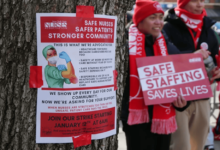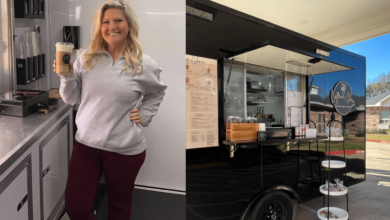Hospitals Avoid Nursing Strikes By Improving Retention

A nursing strike. An occurrence that no hospital or facility administrator (nor patients or the nurses themselves, for that matter) wants to happen is a dreaded one with consequences to patient care, budget finances, and the relationship between an administration and its healthcare staff.
A nursing strike is a serious endeavor that impacts not only the business of a facility or hospital but its reputation with the community, the patients, and non-striking staff. We know short-term per diem nurses can be hired during a strike to assure patient safety for the interim, but what if we focus on prevention? What strategies can be put in place to avoid healthcare labor strikes altogether?
Read How Facilities Can Improve Nurse Retention
How to Avoid a Nursing Strike
In truth, the ethics of healthcare labor strikes are heavily debated in articles, publications, and studies among professionals and academics worldwide. Nevertheless, whether your professional or personal view of nursing strikes finds it to be ethical or unethical, they occur and are even increasing in frequency over the last few years.
Instead of exploring the ethical debate of nursing strikes or merely sharing how to find strike nurses, we accept that they can occur and here shall turn our focus on understanding them and preventing them. To find ways to avoid a nursing strike, we must first acknowledge the reason behind it in the first place. One of the primary reasons nurse union leaders cite for strikes is inadequate staffing levels.
Nurses Strike Over Staffing Levels

In a country experiencing a severe nursing shortage while at the same time enduring and overcoming a pandemic, staffing levels have been a constant headache for a majority of hospital and facility schedulers and administrators. Nursing vacancies are high, turnover is high, staff morale is low, nurses are retiring or burning out, and the nursing education programs need help to grow enough to build the necessary supply to meet the aging baby boomer generation demand.
Read About Fast-Tracked Education Programs to Combat Nursing Shortage
All these factors circling each other manifest in a vicious cycle, meaning that the nurses you have employed are having to work harder (higher nurse-to-patient ratios) and perhaps more hours (does your facility have a mandatory overtime policy?), which in turn pushes them further into dissatisfaction, anxiety, burnout, and turnover when you need retention more desperately than ever.
Challenges to Hiring Nurses
The average number of days it takes a hospital to hire a staff RN is 89, which means 89 days of being short-staffed. You shouldn’t feel rushed to hire because taking the time to ensure a nurse is a good candidate and an appropriate fit for the setting is essential for your retention goals. After all, hiring costs money, as does nurse turnover, and yet 89 days is a long time for the rest of your staff to pick up the slack.
Here, we can present an efficient and economical tool, Nursa, as a strategy. A stop-gap measure designed to disrupt the vicious cycle of vacancies and turnover that can bolster nurse-to-patient staff ratios and show your present staff your dedication to ensuring their workload is manageable: hire per diem nurses to fill shift vacancies.
How Hiring Per Diem Nurses Can Help to Avoid Nurse Strikes
Hiring nurses and allied healthcare workers from Nursa’s talent pool allows you to react quickly to fluctuating staff and patient levels. Vet candidates to fill your vacancies with nurses who will fit and who will stay. Despite vacancies, with the help of PRN RNs, LPNs, CNAs, and other allied healthcare workers, you can organize safer nurse-to-patient staffing ratios and take the appropriate time necessary to interview.
Hiring PRN staff to fill gaps in shifts and raise staffing levels demonstrates to your staff that in the face of the myriad of challenges you meet, appropriate staffing levels are a priority to your hospital or facility. This utilization of short-term staff further indicates a willingness to seek solutions for present-day problems. Your nurses today may be peripherally glad of your efforts for long-term solutions, but they are also occupied with the day-to-day realities of their workload.
Moreover, as your hospital or facility develops a reputation for being well-staffed, this will further boost your recruitment efforts helping you find better candidates to interview, as no one wants to work in a setting notorious for its workers being understaffed and overworked. A facility with a positive reputation attracts committed and talented workers.
Read How Safe Nurse Staffing Ratios Are Important

Nursa is An Affordable Prevention Strategy
Short-term staffing by filling per diem shifts as a solution is effective and affordable with Nursa. Nursa isn’t a subscription service with hidden fees and requirements. There are no quotas to meet for the number of PRN nurses or CNAs staff you hire. You use Nursa only when you need it knowing it’s there for you when the need arises again.
This flexibility with the number of staff prevents you from being overcommitted to too many staff when patient intake is low. Furthermore, Nursa handles nursing license verification and background checks, freeing up your time and money for other concerns.







